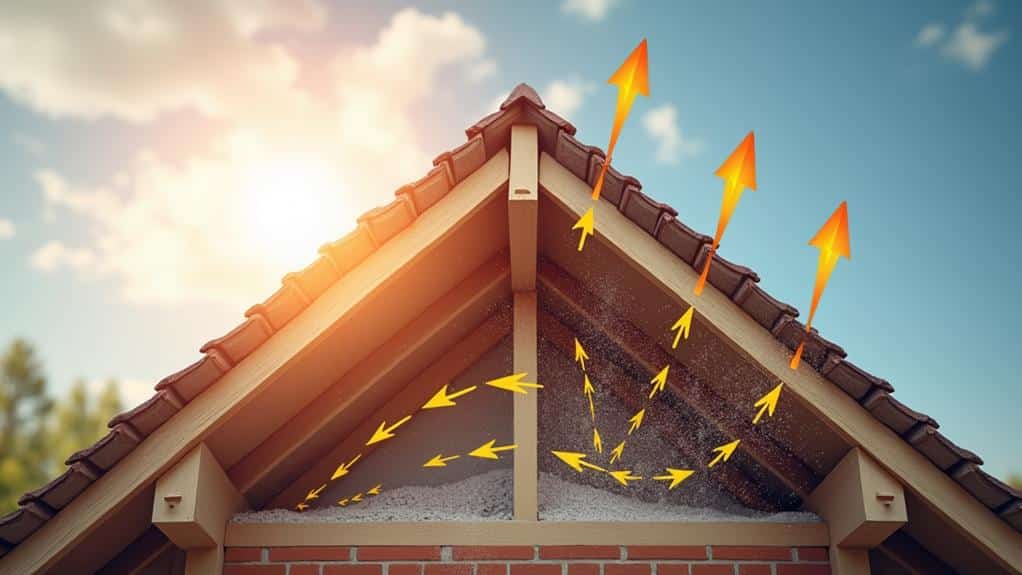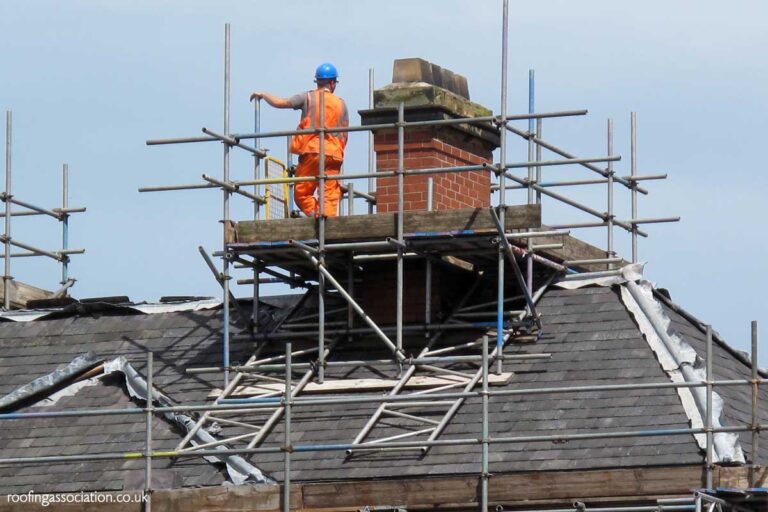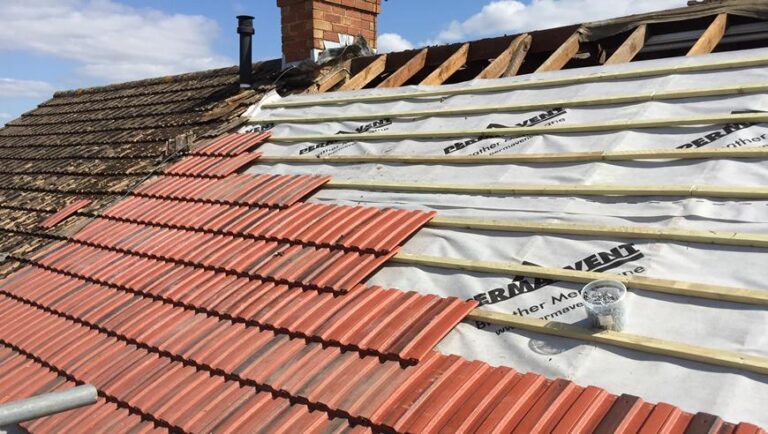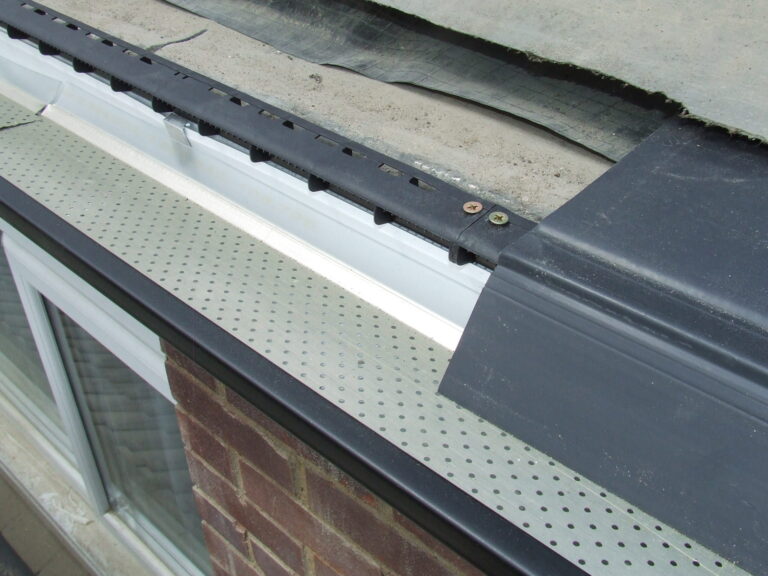At Point Roofing & Guttering, we have worked on homes across Norwich for many years and understand the important of a properly ventilated roof. Having the right airflow in your roof keeps your roof lasting longer and your home feeling fresher. Not having enough roof ventilation is not always easy for an untrained homeowner to spot but if left can cause major problems to your roof and home.
The roofers from the Point Roofing & Guttering team have put together some vital information on what to look out for and why it matters. Continue reading to find out more.
Why Does Roof Ventilation Matter?
You may think why does a roof need to breath? But roof ventilation is an essential part working in the background by:
- Keeps the roof healthy by reducing moisture that leads to damp and mould.
- Decreases temperatures spikes that can cause damage to timber work and insulation.
- Keeps your roof structure strong so it can hold the weight of the tiles.
- Reduces energy costs by keeping the roof cool and efficient.
A roof with little roof ventilation can result in twisted beams, rotting timbers, and higher bills leading to major roof repairs. If moisture gets trapped inside it will start to cause everything to deteriorate and even the best built roof in Norwich won’t last if stale.
Signs Your Roof is Properly Ventilated
Natural Air Flow
A well-ventilated roof consists of many elements such as roof vents, roof tile vents, over fascia vents, breathable membrane and dry ridge. The careful balance allows the drawing of cool air in and letting warm air escape.
- Intake vents are installed at the eaves and the soffits to pull in fresh air.
- Exhaust vents are installed high up the roof by the ridge tiles to release hot, moist air.
Simple trick: If you want to check whether your vent is working correctly, you can hold a bit of paper in front of the vent to see if it moves. If the paper flutters then you know the vent is circulating air correctly.
Attic Stays a Consistent Temperature
Take a wander into your loft during a hot day in Norwich. If it feels stuffy or much warmer than outside, something’s off. When ventilation is right, attic temps are usually close to the temperature outside.
No Signs of Damp or Mould
Proper ventilation means you shouldn’t find:
- Damp patches on insulation or rafters
- Mould along wood beams or under the roof deck
- Faint musty smells in the attic
Everything should look dry and clean, without warped or rotting timbers.
Your Roof Survives Winter Without Ice Dams
After snow, check for big ridges of ice forming at the eaves. Proper airflow keeps temperatures steady under the roof, reducing the risk of these ice build-ups.
Vents That Are Well-Placed and Unblocked
Take a good look, are the vents spaced out along the ridge, with plenty along the soffits? Can you see daylight through some of them? Blocked, damaged, or missing vents will cause problems before long.
What If Your Roof Isn’t Ventilated Properly?
You End Up With Damp and Mould
Poor airflow means moisture hangs around. Over time, that leads to:
- Mould growing on woodwork and insulation.
- Rafters and roof decks beginning to rot.
Problems like these always get worse if you ignore them.
Heating and Cooling Bills Go Up
A stifling attic makes your home much harder to heat or cool. You’ll probably find yourself turning the thermostat up or down more than usual and that means bigger bills.
Roof Materials Wear Out Faster
Tiles might curl, felt can perish, and timbers twist or crack. Instead of getting years out of your roof, you end up paying for repairs far sooner than you should.
Your Home’s Air Quality Suffers
If you or your family are struggling with allergies or coughing fits, poor ventilation and the resulting mould might be to blame.
Hidden Damage Gets Worse Over Time
Trapped moisture quietly eats away at the roof’s structure, leading to leaks and weakening everything above your head.
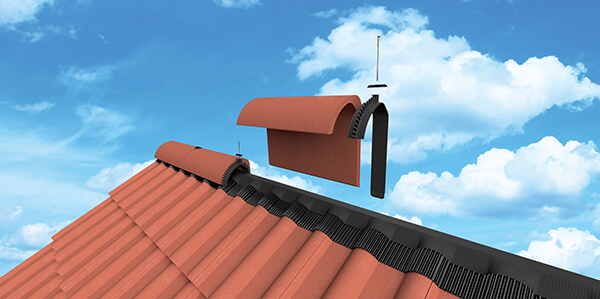
Checking Your Roof Ventilation
Take a Look Yourself
Start simple. Head outside and see what’s visible on your roof:
- Vents along the ridge and soffits or possibly in gable ends.
- Inside the loft, note any unusual smells, damp spots, or insulation shifted about by airflow.
Get Help from Professionals
Specialists like our team at Point Roofing & Guttering (right here in Norwich) can use:
- Smoke sticks to watch how air moves around your attic.
- Moisture meters that highlight any hidden damp.
Thermal Imaging
Infrared cameras can highlight temperature swings in your attic. Any hotspots (or cold patches) suggest places where air isn’t moving as it should.
Use a Ventilation Calculator
There are handy online tools where you can enter your attic size, pitch, and how many vents you have. They’ll show if you’ve got it about right or if changes are needed.
Easy Mistakes People Make
We come across these time and again:
Too Many Vents
Sometimes people think more is always better, but vents need to be balanced. Too many can actually stop air circulating properly.
Vents Get Accidentally Blocked
Painting over or stuffing insulation into soffit vents is a common problem. If air can’t get in or out, moisture builds up quickly.
Mixing Incompatible Vent Types
Throwing in every vent type going can set up air currents that cancel each other out.
Improving Roof Ventilation
If you’re worried your ventilation isn’t right, here’s what you can do:
Keep Vents Clear
Regularly check for dust, cobwebs, leaves, or even bird nests. Just a small obstruction can throw things off balance.
Add Vents Where Needed
Sometimes, extra vents or attic fans are a smart move but only if placed with care. Our Norwich-based team always works out the right configuration for your home.
Upgrade Your Insulation
A well-insulated loft stops temperature swings and keeps moisture at bay. Choose materials that are tough on damp.
Call the Experts
There’s no substitute for a proper check. At Point Roofing & Guttering, we’re happy to inspect roofs throughout Norwich, repairing and upgrading ventilation as needed.
Real-World Examples from Norwich
One family just outside Norwich struggled with ice dams every winter. After a re-fit with new ridge and soffit vents, mould and icy build-up disappeared. For another homeowner facing soaring summer bills, we installed attic fans, dropping cooling costs by 15%, all while keeping their loft much more comfortable.
Questions to Ask Yourself
If you are reading this and still in doubt then ask yourself the following questions:
- Have you noticed an increase in energy bills for no reason?
- When you go into the loft does it feel overly hot in the summer and cold in the winter?
- Is there a smell of damp in the loft or moisture on the felt underlay?
If your answer is yes to any of these questions then you need to call a roofing company like Point Roofing & Guttering to inspect your roof and loft.
Final Thoughts
You should now understand the importance of proper roof ventilation and how it protects your home, saves you money and keeps your roofing lasting for longer. If you live in Norwich and need more advice on this and an inspection of your roof then contact our team today and we can assess your roof and ensure it has proper roof ventilation.


